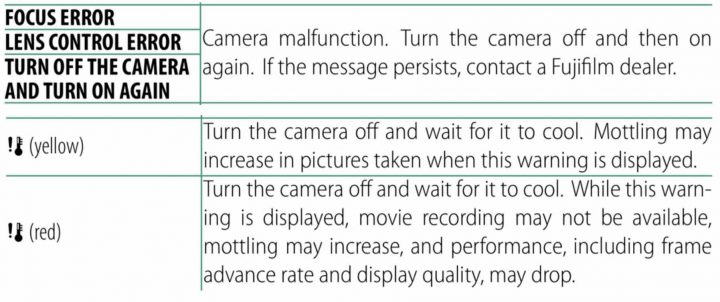GFX100 Shadow Recovery
Piet Van den Eynde has tested how far can you take a Fujifilm GFX100 file in postproduction. You can check it out in the video above.
GFX100 Overheats?
GFX 100 overheats says Jack:
“I received a strange message, “Turn off the camera, and turn it back on.” I tried that several times, and I kept receiving the same message. I took the batteries out, reloaded them, and tried again. Same message. I tried a second set of batteries. Same message.
I figured it must be the heat. At this point, I had taken 97 photographs in single-shot mode over a 90-minute period. No video.”
More at gfxmagazine.
Potential cause (and solution)

Stupid Resolution & Unforgiving Camera
digitalcameraworld woners: is 100MP just stupid? In their Fujifilm GFX100 review they write:
Unfortunately (for us), the GFX 100 has a higher resolving power even than our test chart, which maxes out at 4,000 line widths/picture height! This is normally plenty for even the best digital cameras, but not this time. […]
The GFX 100 can capture extraordinary levels of detail, but your technique has to be absolutely perfect. In our tests, we could often see differences between two examples of the same shot taken at the same time. We’re not talking about ‘marginal’ handheld shutter speeds here. Even at two or more times the usual ‘safe’ shutter speed, we saw variations. That’s not because there’s anything wrong with the camera. It’s because its resolution is so high that it will reveal even the slightest camera movement or focus shift, where both might be completely invisible on a lower-resolution camera. […]
The GFX 100 is an unforgiving camera. It will magnify your resolution, but it will also magnify your errors […]
Nevertheless, the GFX 100 is proof that megapixels still matter (as long as the sensor is big enough).
Read it all at digitalcameraworld.
& More

